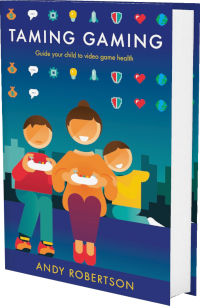 Android
Android iOS
iOS Mac
Mac Switch
Switch Wii
Wii Wii U
Wii U PC
PC PS4
PS4 PS5
PS5 Xbox One
Xbox One Xbox X|S
Xbox X|SWe've documented 24 accessibility features for The Legend of Zelda: Tears of the Kingdom, including Motion Aiming, Play Without Hearing, Audio Cues, Partially Voiced and Speaker Indicator. Its accessibility is strongest in Navigation and Getting Started but it also has features in Controls, Reading, Visual and Audio to reduce unintended barriers.
This report is created with input from accessibility experts and the player community to help people find games that have the accessibility features they require. Once you have found potential games on the database, there are excellent specialist accessibility sites that offer in-depth reviews to guide your purchasing decisions.
Our accessibility examiner, Andy Robertson, first checked The Legend of Zelda: Tears of the Kingdom accessibility a year ago. It was re-examined by Ben Kendall and updated 8 months ago.
 Accessibility Notes
Accessibility Notes
The game map needs to be revealed area by area. It enables you to place markers for where you want to go that then appear as a beacon in the game world. It also highlights the location of your currently selected main mission. Less helpful, the mission markers are for the start of the mission rather than where you need to go to complete it. You can lock the minimap to always point north, as well as minimise the in-game head-up display.
Memorising or looking up recipes is aided by being able to save your favourite Recipe Cards for the most effective ingredient combinations. The game also provides a character log if you need a reminder of the people you met with both visual and textual context for them. You can pause the game and read recent dialogue by pressing the Y button when talking to characters or during cutscenes. You can reread the log of the conversation you're having, but any previous conversations aren't able to be looked back upon unless you go talk to the right character again.
The font size is often quite small. The text is usually white, but red is used to emphasise key locations, objects, or characters that you may wish to visit, find or meet. Sometimes a quest or sidequest is activated and this new info is tracked. An even smaller font is used when a character is muttering phrases. A grey font is used for whispered phrases.
Many of the in-game menus have been refined since Breath of the Wild to avoid switching screens so often and reduce the cognitive load of selecting items by their type. Also, when opening a chest, if your inventory is full there is the option to swap the new item in and drop something, reducing required interactions for this substantially.
The Head-Up Display provides information about the temperature and noise you are making. More usefully, you can earn an ability that emits a sound that changes the closer you are to the Shrine dungeons in the game. You can use this to locate other items, vegetation, animals and monsters (often useful for recipes) once you've identified them in the Compendium by taking their picture.
There are some side-missions that require hearing to be able to complete as you use sound alone to get to a location.
 Game Details
Game Details
Release Date: 10/05/2023
Out Now: Switch
Skill Rating: 10+ year-olds
Players: 1
Genres: Action, Adventure (Fighting, Platform and Traversal)
Accessibility: 24 features
Components: 3D Third-Person, Cartoon, Day and Night, Open World and Weather
Developer: Nintendo (@Nintendo)
Costs: Purchase cost, In-Game Purchases and In-Game Pass
 Controls
Controls
We've documented 5 accessibility features for Controls in The Legend of Zelda: Tears of the Kingdom which deal with how you control the game, different options for alternative inputs and whether you can remap these settings to suit your needs.
Gamepad
Can play with the following:
Multiple Buttons & Two Sticks: Can play with multiple buttons and two sticks.
Motion
Games that can be played with different sorts of motion controllers.
Motion Aiming: Can use small movements of the gamepad to fine-tune aiming or as the main aiming mechanism. This is sometimes known as Gyro-Aiming. This usually provides the ability to calibrate these controls to taste.
Motion Tilting: Can use movements of the controller to replace steering or simple movement otherwise controlled by left/right movement of a stick.
Remap Controls
Can customise the controls for the game as follows:
Invert X/Y Axis: Can invert the direction required to control looking and aiming. This enables you to match your instinctive orientation when looking.
Sensitivity
You can adjust
Adjust Mouse/Stick/Touch Sensitivity: Adjust how sensitive touch/mouse/stick controls are.
Similar Games With More Accessibility Features for Controls
If you want to play The Legend of Zelda: Tears of the Kingdom, but it doesn't offer the Controls accessibility features you require, these similar games extend the Controls accessibility:
- Immortals Fenyx Rising (13 Controls Features)
- Craftopia (11 Controls Features)
- Lego Fortnite (11 Controls Features)
- Tchia (11 Controls Features)
 Difficulty
Difficulty
We haven’t documented any accessibility features for Difficulty in The Legend of Zelda: Tears of the Kingdom which deal with how you can adjust the challenge of play, and whether this is locked once chosen or can be adjusted as you play. The following games are similar to The Legend of Zelda: Tears of the Kingdom, and offer accessibility features for Difficulty:
- Prince of Persia: The Lost Crown (3 Difficulty Features)
- Palworld (3 Difficulty Features)
- Horizon Forbidden West (3 Difficulty Features)
- Immortals Fenyx Rising (3 Difficulty Features)
 Getting Started
Getting Started
We've documented 6 accessibility features for Getting Started in The Legend of Zelda: Tears of the Kingdom which deal with what support is offered to get started with the game. This includes customising the experience when you first open the game via any onboarding processes it provides as well as tutorials and other assistance when you first start playing.
Assistance Getting Starting
These features aid your play of the game in terms of cognitive load on learning controls, dealing with pressure and coping with the environment and challenges.
Tutorials: There are helpful tutorials and instructions on how to play. Information is provided in a timely manner, with appropriate level of detail.
View Control Mapping: You can view a map of controls during play. This clearly displays the mappings of actions to buttons/keys/mouse/keyboard without having to leave the game. This includes games that always display buttons to press during play.
Assistance For Progressing
These features aid your progress through the game offering different ways of maintaining your progression.
Bank Progress With Frequent Checkpoints: If you fail you can retry that level or aspect of the game without losing a lot of progress (less than 5 minutes). This is often provided via Frequent Checkpoints combined with restarting without losing time, equipment or score.
Assisted Recall for Characters: The game provides reminders about character identity during play. This includes pop-up images and bios for character who is speaking.
Assisted Recall for Narrative and Dialogue: The game enables you to review the history of conversations or provides highlights of the information you gather in a form you can review.
Save Progress Anytime: The game automatically saves progress or you can save any time. This doesn’t mean you never lose progress, but it does mean you can stop whenever you want (without having to get to a save point) without losing progress.
Similar Games With More Accessibility Features for Getting Started
If you want to play The Legend of Zelda: Tears of the Kingdom, but it doesn't offer the Getting Started accessibility features you require, these similar games extend the Getting Started accessibility:
- Immortals Fenyx Rising (8 Getting Started Features)
- Mars First Logistics (7 Getting Started Features)
- Mail Time (7 Getting Started Features)
- Tchia (7 Getting Started Features)
 Reading
Reading
We've documented 4 accessibility features for Reading in The Legend of Zelda: Tears of the Kingdom which deal with how much reading or listening comprehension is required, how well the game provides visual and audible access to the text and whether subtitles and captions are a good fit for purpose.
Reading Level
How much reading is required to play the game's main path or story and how complex the language is. The presence of voiced characters doesn't reduce this requirement, as it's recorded as a separate datapoint.
Moderate Reading: Moderate reading required. The quantity and complexity of reading are at a level that a high school student (14-year-old) would appreciate.
Subtitles
All Speech Subtitled (Or No Speech In Game): All spoken content has subtitles, or there is no speech in the game. This means there is no requirement to hear spoken dialogue or narrative to play the game.
Captions
Speaker Indicator: Textual captions indicate who is speaking (or there is only ever one person speaking). This can also be indicated visually in the game with character icons or placing text in speech bubbles next to the person speaking.
Voice Acted
Some Dialogue is Voice Acted: Some of the game dialogue and narrative is voice acted. This reduces the pressure on reading all the dialogue text, although not everything is provided audibly.
Similar Games With More Accessibility Features for Reading
If you want to play The Legend of Zelda: Tears of the Kingdom, but it doesn't offer the Reading accessibility features you require, these similar games extend the Reading accessibility:
- Biomutant (7 Reading Features)
- The Legend of Zelda: A Link Between Worlds (6 Reading Features)
- Sneaky Sasquatch (6 Reading Features)
- Horizon Zero Dawn (6 Reading Features)
 Navigation
Navigation
We've documented 7 accessibility features for Navigation in The Legend of Zelda: Tears of the Kingdom which deal with how the game provides guidance and assistance to navigate its worlds. These are only for games that have traversal and exploration in 2D and 3D spaces.
Clarity
Clear Mission Objectives: The game provides clear, structured missions with directional guidance and advice on which can be attempted next. This also indicates (ideally on maps where they are provided) which missions can't be attempted because you do not have the appropriate items yet.
Head-Up Display
Head-Up Display Navigation: Indication of where to go next with overlaid arrows, minimaps and waypoint markers. This supplements in-game visual and audible cues with additional guidance about where you are and where you need to go.
Adjust Head-Up Display: Resize and adjust the content of the head-up display. This enables it to be made more visible. It can also enable the removal of too much information that can be distracting or confusing.
Game Map: View a map of the game world during play, with the landscape, points of interest and missions highlighted throughout the entire game. This enables the orientation of the player and the world, confirming a direction of movement and the location of destinations or points of exploration.
Menu Navigation
Menu Audio Cues: Navigating menus provide an audio cue for each selection.
Digital Menu Navigation: Menu choices with Gamepad can be made without using an analogue stick to guide a cursor to a selection. For example, using D-Pad, buttons or the Stick to change menu selection in a single action.
Menus Don't Wrap: Menus don't wrap and stop the cursor at the bottom of the list if you press down. Or menus do wrap but make it clear that you are back at the top of the list with sound or narration.
Similar Games With More Accessibility Features for Navigation
If you want to play The Legend of Zelda: Tears of the Kingdom, but it doesn't offer the Navigation accessibility features you require, this similar game extends the Navigation accessibility:
- Hogwarts Legacy (8 Navigation Features)
 Visual
Visual
We've documented 2 accessibility features for Visual in The Legend of Zelda: Tears of the Kingdom which deal with how you can adjust the visuals to suit your needs, and offer additional information if you can't hear the game.
Audio Cues for Visual Events
Audio Cues for Visual Events: Audio is provided to indicate visual events. Game events or progress highlighted by visual icons, effects or animations are also accompanied by audio to signify that progress. This is useful for blind players.
Menu Audio Cues: Navigating menus provide an audio cue for each selection.
Similar Games With More Accessibility Features for Visual
If you want to play The Legend of Zelda: Tears of the Kingdom, but it doesn't offer the Visual accessibility features you require, these similar games extend the Visual accessibility:
 Audio
Audio
We've documented 1 accessibility feature for Audio in The Legend of Zelda: Tears of the Kingdom which deals with how you can adjust the audio of the game and whether audio cues compensate for aspects of the game that are hard to see.
Play Without Hearing
Play Without Hearing: No audio cues are necessary to play the game well.
Similar Games With More Accessibility Features for Audio
If you want to play The Legend of Zelda: Tears of the Kingdom, but it doesn't offer the Audio accessibility features you require, these similar games extend the Audio accessibility:
- Lego Fortnite (4 Audio Features)
- Smalland (4 Audio Features)
- Hogwarts Legacy (4 Audio Features)
- Immortals Fenyx Rising (4 Audio Features)
System Accessibility Settings
In addition to the accessibility features provided in the game, you can also use system-wide accessibility settings:
Nintendo Switch
Nintendo Switch has some built-in features, including a lockable zoom, that can be used on all games.
Read more about system accessibility settings.
Accessibility Report supported by VSC Rating Board, PlayabilityInitiative and accessibility contributors Andy Robertson, Jo Robertson and Ben Kendall












